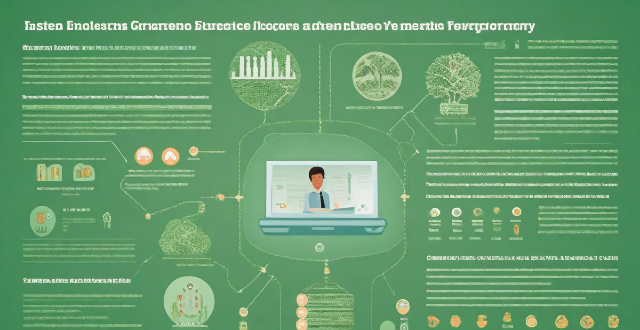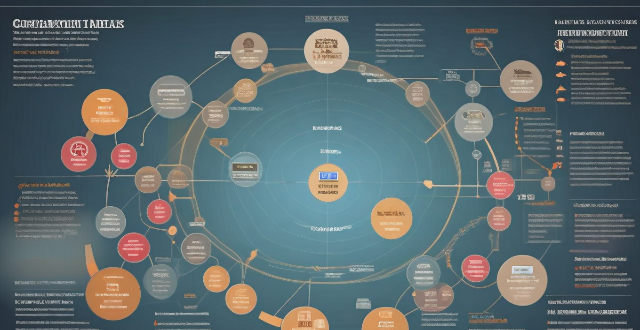Green Industry

What is green building and why is it important for the construction industry ?
Green building is an approach to design, construction, operation, and maintenance of buildings that aims to minimize environmental impact and resource consumption throughout a building's lifecycle. It focuses on sustainability, energy efficiency, water conservation, materials selection, and indoor environmental quality. The importance of green building in the construction industry stems from environmental concerns, economic benefits, and social responsibility. Green buildings reduce carbon footprint, conserve resources, preserve biodiversity, save energy costs, have higher asset values, and promote healthier living conditions. They also set community standards for sustainable practices and help companies stay ahead of compliance requirements. Green building drives innovation in materials science, design techniques, and construction technology. Overall, green building represents a fundamental shift towards more sustainable and responsible practices within the construction industry.

What role does government play in promoting green technology ?
The government plays a crucial role in promoting green technology. This is because the government has the power to create policies and regulations that can encourage the adoption of sustainable practices and technologies. Here are some ways in which the government can promote green technology: 1. Funding and Incentives 2. Regulations and Standards 3. Public Awareness Campaigns 4. Collaboration with Industry

What industries offer the most green job opportunities ?
Green jobs are positions that help to preserve or improve the environment. As society becomes more aware of environmental issues and the need for sustainable development, green jobs are becoming increasingly popular. The industries offering the most green job opportunities include renewable energy, environmental science and conservation, sustainable agriculture, waste management and recycling, and green building and construction. Jobs in these sectors range from engineers and technicians to researchers and educators.

How can we promote the use of green technology ?
Green technology is essential for mitigating climate change and ensuring a sustainable future. To promote its use, strategies include education campaigns, integrating sustainability into school curricula, offering financial incentives and tax breaks, implementing regulations, funding research and development, encouraging corporate responsibility, supporting community projects, showcasing successes, participating in global agreements, promoting eco-labeling, and encouraging green marketing. These efforts can drive innovation, create jobs, and foster economic development sustainably.

What are the economic benefits associated with urban green spaces ?
Urban green spaces provide economic benefits to cities, including increased property values, reduced air pollution, and enhanced tourism. These spaces improve the living environment, leading to higher home and rental prices, increased tax revenue, and healthcare cost savings. Additionally, they attract tourists, boosting the local economy through job creation and multiplier effects. Investing in urban green spaces is beneficial for both the environment and city prosperity.

How can we encourage more people to adopt green technology ?
In this article, the author discusses various ways to encourage people to adopt green technology. These include education and awareness, financial incentives, government policies and regulations, collaboration and partnerships, and research and development. The author emphasizes the importance of promoting the benefits of green technology, highlighting its environmental impact, and sharing success stories. They also suggest offering tax credits, rebates, grants, and low-interest loan programs to incentivize individuals and businesses to invest in green technology. Additionally, the author recommends implementing mandatory standards for energy efficiency and emissions reduction, creating incentive programs for companies that exceed environmental regulations, and prioritizing the purchase of green technology products by government agencies. Collaboration with industry leaders, non-profit organizations, and local communities is also crucial in promoting the adoption of green technology. Finally, the author suggests investing in innovation, supporting startups working on green technology solutions, and facilitating access to resources for researchers and developers.

What role do banks play in promoting green finance ?
Banks promote green finance by offering loans for sustainable projects, investing in eco-friendly companies, and introducing green products. They also educate customers on sustainability and collaborate with governments and NGOs to support green initiatives.

How has the sports industry influenced the film industry ?
The sports industry has significantly impacted the film industry in various ways, including inspiring storylines, providing cross-promotion opportunities, fostering collaborations between athletes and filmmakers, and shaping certain film genres.

What are the most prestigious awards in the entertainment industry ?
The entertainment industry has several prestigious awards that recognize outstanding achievements in various fields such as acting, directing, producing, and music. Some of the most notable awards include the Academy Awards (Oscars), Emmy Awards, Grammy Awards, Tony Awards, Golden Globe Awards, BAFTA Awards, Critics' Choice Awards, and MTV Movie & TV Awards. These awards not only honor talented individuals but also set the benchmark for excellence in the industry.

Are green jobs accessible to people from all socio-economic backgrounds ?
The accessibility of green jobs to individuals from diverse socio-economic backgrounds is a complex issue that involves several factors, including education and training, job market dynamics, socio-economic barriers, and policy initiatives. To ensure that green jobs are accessible to people from all socio-economic backgrounds, concerted efforts from educational institutions, employers, and governments are needed to remove barriers and promote inclusivity.

How does green finance contribute to sustainable development ?
Green finance plays a pivotal role in driving sustainable development by channeling financial resources towards environmentally friendly projects and initiatives. Here's a detailed look at how it contributes: 1. Promoting Renewable Energy 2. Supporting Green Infrastructure 3. Advancing Clean Technology 4. Influencing Corporate Behavior 5. Regulating Financial Markets 6. Educating Investors and the Public

What is green finance ?
Green finance is the use of financial instruments and strategies to support environmentally friendly projects. It includes sustainable investing, green bonds, green banks, carbon credits, impact investing, climate-related disclosures, ESG criteria, green indexes, green funds, green insurance, green tax incentives, green microfinance, green real estate, green technology, and green partnerships. The goal of green finance is to promote economic growth while minimizing negative impacts on the environment.

How do climate-related concerns influence consumer choices in the food industry ?
Climate change is a pressing issue that affects various aspects of life, including the food industry. As consumers become more aware of their environmental impact, they are increasingly making choices based on climate-related concerns. This shift in consumer behavior has significant implications for food producers, retailers, and the entire supply chain. Factors influencing consumer choices include environmental sustainability, health considerations, economic factors, ethical concerns, personal values and beliefs. The impact on the food industry includes product development, supply chain management, marketing strategies, retail practices, and policy influence. Businesses that adapt to these changing preferences by embracing sustainability and transparency are likely to gain a competitive edge in the marketplace. It is essential for companies to anticipate and respond to these trends to maintain relevance and profitability while contributing positively to the environment.

Is it possible to create a truly sustainable "green" battery ?
Creating a truly sustainable "green" battery is an ambitious goal that aligns with the global effort to reduce environmental impact and transition towards renewable energy sources. However, achieving this objective presents significant challenges and requires innovations in materials, design, and production processes. Key considerations for sustainable batteries include eco-friendly raw materials sourcing, recyclability, energy-efficient manufacturing processes, waste management, high energy density, longevity, comprehensive recycling programs, and secondary uses. Challenges and trade-offs involve technological limitations such as research and development needs and potential performance trade-offs, economic implications like increased production costs and market adoption challenges, as well as legislative and regulatory frameworks needed to promote green batteries. In conclusion, creating a truly sustainable "green" battery is feasible but complex, involving multifaceted approaches across material selection, manufacturing processes, product performance, and end-of-life management.

What is the future outlook for green jobs ?
The future outlook for green jobs is promising, asThe future outlook for green jobs is promising, as eco-friendly practices continues to The key factors driving this growth include government policies, consumer demand, technological advancements, corporate social responsibility, and international collaboration. Examples of green jobs include renewable energy technicians, sustainability managers, green building designers, waste management professionals, conservation scientists, and environmental lawyers.

What is the current market share of CHEVs compared to other types of green vehicles ?
The market share of CHEVs compared to other types of green vehicles can be broken down into several categories, including hybrid electric vehicles (HEVs), plug-in hybrid electric vehicles (PHEVs), and battery electric vehicles (BEVs). HEVs are one of the most popular types of green vehicles on the market today, accounting for approximately 2.5 million units sold worldwide in 2020. PHEVs are similar to HEVs but have a larger battery pack that can be charged from an external power source, with global sales reaching around 1.3 million units in 2020. BEVs are fully electric vehicles that rely solely on batteries for power, with global sales reaching over 3 million units in 2020. When comparing CHEVs to other types of green vehicles, it is important to note that CHEVs fall under the category of HEVs. Therefore, the actual market share of CHEVs compared to other types of green vehicles would likely be much smaller than 2.5 million units sold worldwide in 2020.

Are there any celebrities who have publicly spoken about the importance of having true friends in the entertainment industry ?
The text discusses the importance of having true friends in the entertainment industry, as highlighted by various celebrities. These include Taylor Swift, Amy Schumer, Justin Timberlake, Oprah Winfrey, Kristen Bell, Dwayne Johnson (The Rock), Lady Gaga, Emma Stone, Chris Pratt, and Selena Gomez. They have all spoken about the value of genuine connections and supportive relationships in maintaining their well-being and happiness amidst the challenges and unpredictability of the entertainment industry.

How do fuel vehicles affect the economy, particularly in terms of employment in the oil industry ?
The text discusses the impact of fuel vehicles on employment in the oil industry. It highlights that the industry offers a range of jobs from exploration and extraction to refining, distribution, and sales. However, it also notes challenges such as market volatility, environmental concerns, and technological advances that could affect job stability in the sector. The text concludes by emphasizing the need for strategies that promote economic stability while encouraging sustainable practices and innovation.

How has social media impacted the entertainment industry ?
The text discusses the impact of social media on the entertainment industry. It mentions that social media has increased accessibility to content, changed content creation, made it possible for audiences to interact with creators, become a crucial tool for marketing and promotion, and created new revenue streams. The text concludes that social media has had a profound impact on the industry and will continue to shape its future.

How has the private equity industry evolved over time ?
The private equity (PE) industry has undergone significant changes since its inception, evolving from small and mid-sized business investments to larger companies and more complex transactions. The industry has diversified into various sub-sectors like venture capital and distressed investing, allowing firms to specialize in specific areas. Technological advancements have played a crucial role in shaping the PE industry, improving investment decision-making processes. Regulatory changes have also influenced the evolution of the industry, promoting transparency, fairness, and accountability. Looking ahead, the PE industry is likely to continue evolving as it adapts to changing market conditions, technological advancements, and regulatory environments.

How do regulations affect the growth of the commercial space industry ?
Regulations significantly influence the growth of the commercial space industry by providing a framework for innovation, ensuring safety and security, promoting competition, addressing environmental concerns, and adapting to rapid changes. Effective regulations can facilitate industry growth by reducing uncertainty and lowering barriers to entry, while also protecting public interest through strict safety standards and sustainable practices.

What are the latest trends in the entertainment industry ?
The entertainment industry is constantly evolving, with new trends emerging every year. Some of the latest trends include streaming services, virtual reality and augmented reality technologies, e-sports and live streaming, interactive content, and diversity and inclusion. Streaming services like Netflix and Hulu are becoming more popular as people cut the cord on cable subscriptions. Virtual reality and augmented reality technologies are being explored for use in gaming, movies, concerts, and live events. E-sports has become a major trend with millions of people tuning in to watch professional gamers compete. Interactive content creates a more engaging experience for audiences by allowing them to influence the outcome of a show or movie. Diversity and inclusion are also becoming increasingly important in the entertainment industry as studios and networks work to create more diverse casts and stories that reflect different cultures and perspectives.

How does green technology help the environment ?
Green technology, or clean technology, includes various techniques and products designed to reduce environmental harm. Its benefits include reducing greenhouse gas emissions, conserving natural resources, protecting ecosystems, reducing waste, and promoting sustainable practices. These technologies help minimize pollution, save energy, preserve water, maintain biodiversity, and encourage recycling and responsible waste management. As green technology advances, its positive impact on the environment is expected to increase.

How can an understanding of environmental psychology aid in the design of green spaces that enhance mental health ?
The text discusses the importance of environmental psychology in designing green spaces that enhance mental health. It highlights key principles such as biophilia, perceptions of safety, social interaction, cognitive restoration, and sensory experiences. The article suggests incorporating natural elements, defined areas, communal facilities, quiet zones, and multisensory features to create green spaces that promote relaxation, community building, cognitive engagement, and overall well-being.

What is the impact of e-sports on the entertainment industry ?
E-sports, also known as electronic sports, have become a significant force in the entertainment industry over the past decade. The growth of e-sports has had a profound impact on various aspects of the entertainment sector, including media consumption, advertising, sponsorships, and even traditional sports. In this article, we will explore the different ways e-sports have influenced the entertainment industry. One of the most noticeable effects of e-sports on the entertainment industry is the increased media consumption. With the rise of streaming platforms like Twitch and YouTube Gaming, more people are watching e-sports events than ever before. This has led to a surge in viewership numbers for major e-sports competitions, with some events drawing audiences that rival those of traditional sports. The popularity of live streaming has played a crucial role in the growth of e-sports. Platforms like Twitch allow fans to watch their favorite players and teams compete in real-time, creating an interactive experience that goes beyond simply watching a game. This has not only increased the overall viewership but also provided opportunities for advertisers and sponsors to reach a highly engaged audience. As e-sports continue to gain momentum, so does the number of content creators who specialize in covering the latest news, highlights, and analysis related to the industry. These creators generate a vast amount of content across various social media platforms, further driving engagement and expanding the reach of e-sports within the entertainment landscape. The booming e-sports industry has attracted numerous advertisers and sponsors looking to tap into its growing fanbase. Brands ranging from energy drinks to computer hardware companies have invested heavily in e-sports, sponsoring tournaments, teams, and individual players. Many high-profile e-sports events now feature prominent sponsorship logos and brand integrations throughout their broadcasts. These partnerships not only provide financial support for the organizations hosting these events but also offer valuable exposure for the sponsoring brands. Top e-sports players and teams have secured lucrative endorsement deals with major brands, similar to those seen in traditional sports. These deals often include personal appearances, social media promotions, and exclusive product collaborations, further blurring the lines between e-sports and mainstream entertainment. E-sports' rapid growth has prompted many traditional sports organizations to take notice and adapt accordingly. Several professional sports leagues, such as the NBA and NFL, have launched their own e-sports initiatives or partnered with existing e-sports organizations to expand their reach among younger audiences. There has been a notable crossover between e-sports professionals and traditional athletes, with some former athletes transitioning into e-sports careers or investing in e-sports teams. Additionally, traditional sports stars have participated in e-sports events or collaborated with e-sports personalities, showcasing the increasing interconnectedness of these two worlds. Recognizing the potential of e-sports, several major sports organizations have made substantial investments in the space. This includes everything from forming dedicated e-sports divisions within their organizations to acquiring stakes in existing e-sports teams or leagues. These moves underscore the belief that e-sports represent a viable long-term investment opportunity within the broader entertainment industry. E-sports' impact on the entertainment industry is undeniable, as it continues to shape how we consume media, engage with brands, and interact with both emerging and established forms of entertainment. As e-sports continue to grow and evolve, they will undoubtedly play an increasingly central role in shaping the future of the global entertainment landscape.

What role do urban green spaces play in climate adaptation strategies ?
Urban green spaces play a crucial role in climate adaptation strategies by providing cooling effects, carbon sequestration, flood control, and habitat preservation. To effectively incorporate these spaces into climate adaptation efforts, city planners should conduct assessments, develop comprehensive plans, collaborate with local communities, monitor and evaluate projects, and educate residents about the benefits of green spaces.

What are the benefits of green jobs ?
Green jobs, also known as sustainable jobs or eco-friendly employment, refer to positions that contribute positively to the environment and help in mitigating climate change. These jobs are often focused on renewable energy, energy efficiency, pollution control, waste management, and environmental conservation. The benefits of green jobs are multifaceted and can be categorized into economic, environmental, and social dimensions. In summary, green jobs offer a triple win by stimulating economic growth, protecting the environment, and enhancing social well-being. As societies continue to prioritize sustainability, the importance of these jobs will only increase, making them a cornerstone of future employment landscapes.

How can data analytics help identify areas for energy efficiency improvements in industry ?
Data analytics is crucial for identifying opportunities for energy efficiency improvements in industry. It enables real-time and historical monitoring, benchmarking, process optimization, predictive maintenance, and demand response management. These insights help companies reduce energy waste, cut costs, and minimize environmental impact.

Are there any industry-specific considerations for implementing workplace wellness programs ?
Workplace wellness programs should consider industry-specific needs and challenges. For the manufacturing industry, safety training and ergonomic assessments are essential, while physical fitness initiatives like on-site gym facilities and fitness challenges can encourage employees to stay active. In the healthcare industry, mental health support through stress management programs and access to counseling services is crucial, along with infectious disease prevention measures such as vaccination programs and hand hygiene campaigns. The technology industry can benefit from digital detox retreats and sitting disease prevention strategies like standing desks and movement breaks. Tailoring workplace wellness programs to address industry-specific concerns can create more effective initiatives that improve employee health and productivity.

What role do governments play in promoting the use of green bonds ?
Governments play a crucial role in promoting the use of green bonds by providing incentives for issuance, establishing regulations and disclosure requirements, issuing their own green bonds, and promoting education and awareness campaigns. These actions help accelerate the transition to a more sustainable economy and address pressing environmental challenges facing our planet.